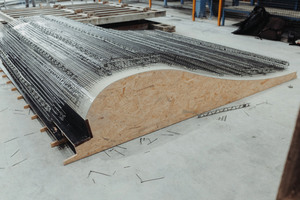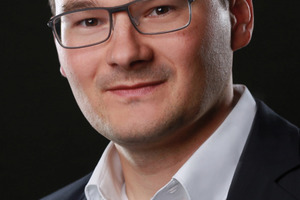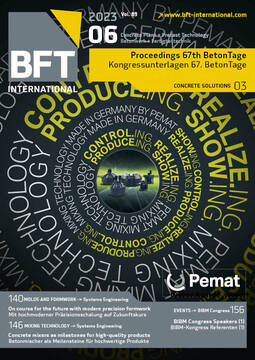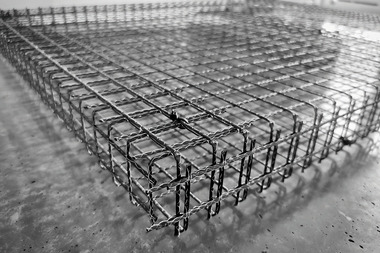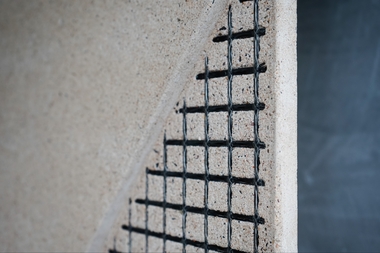Precast elements with non-metallic reinforcement – with and without national technical approvals
In recent years, numerous precast components and struc-
tures have been produced with non-metallic reinforcement, including façades, bridges, and a full-fledged house.
At the outset, the process of designing and manufacturing such innovative components was complex and time-consuming. Among other factors, this was due to the lack of knowledge about the load-bearing behavior of the composite material, which necessitated numerous investigations involving, for example, tensile, bending and shear tests. Reports and expert opinions were prepared on the basis of the outcomes of these tests, and the related approvals were granted on a case-by-case basis.
In the years that followed, adequate design models were developed that made it possible to dimension components and obtain case-specific approvals without having to carry out time-consuming tests. For this purpose, only the material characteristics of the non-metallic reinforcement were required, which were much easier to determine.
Activities in the last few months gave rise to the next milestone: the guideline on designing precast components with non-metallic reinforcement published by the German Committee for Structural Concrete. This resource enables structural engineers to design components without having to prepare an expert opinion for a case-specific approval. Ideally, such an approval can be dispensed with altogether, provided that sufficient information is available about the reinforcement.
In the meantime, this approach has resulted in the creation of impressive components and structures. Pertinent examples include the foot and road bridges in Albstadt and Albbruck, the façade project in Neumarkt and the “Cube” in Dresden, the first full-size building consisting of such components.
Simultaneously with components for which case-specific approvals
were granted, other products have been designed that did not require such individual or national technical approvals. These include slot drains, light wells, and small L-shaped walls. Some of them are harmonized construction products in accordance with the Construction Products Regulation or construction products of minor significance. Just like approved components, they benefit from the advantages of non-metallic reinforcement. In most cases, components can thus be produced in much more slender dimensions, and corrosion problems can be solved.

